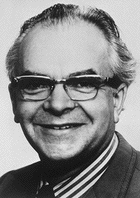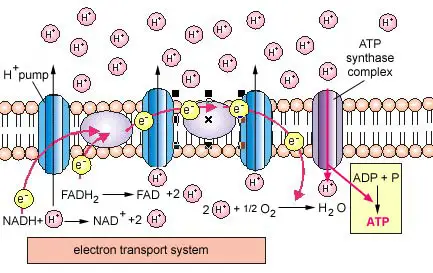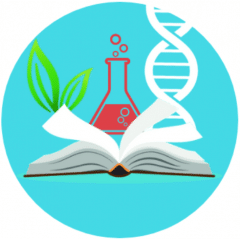17 October 1978
The Royal Swedish Academy of Sciences decided to award the 1978 Nobel Prize in Chemistry to
Dr Peter Mitchell, Glynn Research Laboratories, Bodmin, Cornwall, UK, for his contribution to the understanding of biological energy transfer through the formulation of the chemiosmotic theory.

Chemiosmotic Theory of Energy Transfer
Introduction
Peter Mitchell was born in Mitcham, in the County of Surrey, England, on September 29, 1920. His parents, Christopher Gibbs Mitchell and Kate Beatrice Dorothy (née) Taplin, were very different from each other temperamentally. His mother was a shy and gentle person of very independent thought and action, with strong artistic perceptiveness. Being a rationalist and an atheist, she taught him that he must accept responsibility for his own destiny, and especially for his failings in life.That early influence may well have led him to adopt the religious atheistic personal philosophy to which he has adhered since the age of about fifteen. His father was a much more conventional person than his mother, and was awarded the O.B.E. for his success as a Civil Servant.
Peter Mitchell was educated at Queens College, Taunton, and at Jesus college, Cambridge. At Queens he benefited particularly from the influence of the Headmaster, C. L. Wiseman, who was an excellent mathematics teacher and an accomplished amateur musician. The result of the scholarship examination that he took to enter Jesus College Cambridge was so dismally bad that he was only admitted to the University at all on the strength of a personal letter written by C. L. Wiseman. He entered Jesus College just after the commencement of war with Germany in 1939. In Part I of the Natural Sciences Tripos he studied physics, chemistry, physiology, mathematics and biochemistry, and obtained a Class III result. In part II, he studied biochemistry, and obtained a II-I result for his Honours Degree.
He accepted a research post in the Department of Biochemistry, Cambridge, in 1942 at the invitation of J. F. Danielli. He was very fortunate to be Danielli’s only Ph.D. student at that time, and greatly enjoyed and benefited from Danielli’s friendly and unauthoritarian style of research supervision. Danielli introduced him to David Keilin, whom he came to love and respect more than any other scientist of his acquaintance.
He received the degree of Ph.D. in early 1951 for work on the mode of action of penicillin, and held the post of Demonstrator at the Department of Biochemistry, Cambridge, from 1950 to 1955. In 1955 he was invited by Professor Michael Swann to set up and direct a biochemical research unit, called the Chemical Biology Unit, in the Department of Zoology, Edinburgh University, where he was appointed to a Senior Lectureship in 1961, to a Readership in 1962, and where he remained until acute gastric ulcers led to his resignation after a period of leave in 1963.
From 1963 to 1965, he withdrew completely from scientific research, and acted as architect and master of works, directly supervising the restoration of an attractive Regency-fronted Mansion, known as Glynn House, in the beautiful wooded Glynn Valley, near Bodmin, Cornwall – adapting and furnishing a major part of it for use as a research labotatory. In this, he was lucky to receive the enthusiastic support of his fornler research colleague Jennifer Moyle. He and Jennifer Moyle founded a charitable company, known as Glynn Research Ltd., to promote fundamental biological research and finance the work of the Glynn Research Laboratories at Glynn House. The original endowment of about £250,000 was donated about equally by Peter Mitchell and his elder brother Christopher John Mitchell.
In 1965, Peter Mitchell and Jennifer Moyle, with the practical help of one technician, Roy Mitchell (unrelated to Peter Mitchell), and with the administrative help of their company secretary, embarked on the programme of research on chemiosmotic reactions and reaction systems for which the Glynn Research Institute has become known. Since its inception, the Glynn Research Institute has not had sufficient financial resources to employ more than three research workers, including the Research Director, on its permanent staff. He has continued to act as Director of Research at the Glynn Research Institute up to the present time. An acute lack of funds has recently led to the possibility that the Glynn Research Institute may have to close.
Mitchell studied the mitochondrion, the organelle that produces energy for the cell. ATP is made within the mitochondrion by adding a phosphate group to ADP in a process known as oxidative phosphorylation. Mitchell was able to determine how the different enzymes involved in the conversion of ADP to ATP are distributed within the membranes that partition the interior of the mitochondrion. He showed how these enzymes’ arrangement facilitates their use of hydrogen ions as an energy source in the conversion of ADP to ATP.
 Chemiosmotic hypothesis: Proposed by Peter Mitchel (1970) to explain how NADH oxidation is coupled to ATP synthesis. |
As electrons are passed down the chain, protons are pumped across the membrane (between the inner membrane and outer membrane of the cristae or thylakoids). This results in a pH and electrical gradient. The protons move back into the matrix through a pore created by ATP synthetase allowing the enzyme to make ATP at the expense of this gradient. |
Peter Mitchell’s 1961 paper introducing the chemiosmotic hypothesis started a revolution which has echoed beyond bioenergetics to all biology, and shaped our understanding of the fundamental mechanisms of biological energy conservation, ion and metabolite transport, bacterial motility, organelle structure and biosynthesis, membrane structure and function, homeostasis, the evolution of the eukaryote cell, and indeed every aspect of life in which these processes play a role. The Nobel Prize for Chemistry in 1978, awarded to Peter Mitchell as the sole recipient, recognized his predominant contribution towards establishing the validity of the chemiosmotic hypothesis, and ipso facto, the long struggle to convince an initially hostile establishment.
NOBEL PRIZE IN CHEMISTRY FOR BIOLOGICAL ENERGY TRANSFER
Mitchell’s research has been carried out within an area of biochemistry often referred to in recent years as ‘bioenergetics’, which is the study of those chemical processes responsible for the energy supply of living cells. Life processes, as all events that involve work, require energy, and it is quite natural that such activities as muscle contraction, nerve conduction, active transport, growth, reproduction, as well as the synthesis of all the substances that are necessary for carrying out and regulating these activities, could not take place without an adequate supply of energy.
It is now well established that the cell is the smallest biological entity capable of handling energy. Common to all living cells is the ability, by means of suitable enzymes, to derive energy from their environment, to convert it into a biologically useful form, and to utilize it for driving various energy requiring processes. Cells of green plants as well as certain bacteria and algae can capture energy by means of chlorophyll directly from sunlight – the ultimate source of energy for all life on Earth – and utilize it, through photosynthesis, to convert carbon dioxide and water into organic compounds. Other cells, including those of all animals and many bacteria, are entirely dependent for their existence on organic compounds which they take up as nutrients from their environment. Through a process called cell respiration, these compounds are oxidized by atmospheric oxygen to carbon dioxide and water.
During both photosynthesis and respiration, energy is conserved in a compound called adenosine triphosphate, abbreviated as ATP. When ATP is split into adenosine diphosphate (ADP) and inorganic phosphate (Pi), a relatively large amount of energy is liberated, which can be utilized, in the presence of specific enzymes, to drive various energy-requiring processes. Thus, ATP may be regarded as the universal ‘energy currency’ of living cells. The processes by which ATP is formed from ADP and Pi during photosynthesis and respiration are usually called ‘photophosphorylation’ and ‘oxidative phosphorylation’, respectively. The two processes have several features in common, both in their enzyme composition – both involve an interaction between oxidizing (electron-transferring) and phosphorylating enzymes – and in their association with cellular membranes. In higher cells, photophosphorylation and oxidative phosphorylation occur in specific membrane-enclosed organelles, chloroplasts and mitochondria, respectively; in bacteria, both these processes are associated with the cell membrane.
The above concepts had been broadly outlined by about the beginning of the 1960s, but the exact mechanisms by which electron transfer is coupled to ATP synthesis in oxidative phosphorylation and in photophosphorylation remained unknown. Many hypotheses were formulated, especially with regard to the mechanism of oxidative phosphorylation; most of these postulated a direct chemical interaction between oxidizing and phosphorylating enzymes. Despite intensive research in many laboratories, however, no experimental evidence could be obtained for any of these hypotheses. At this stage, in 1961, Mitchell proposed an alternative mechanism for the coupling of electron transfer to ATP synthesis, based on an indirect interaction between oxidizing and phosphorylating enzymes. He suggested that the flow of electrons through the enzymes of the respiratory or photosynthetic electron-transfer chains drives positively charged hydrogen ions, or protons, across the membranes of mitochondria, chloroplasts and bacterial cells. As a result, an electrochemical proton gradient is created across the membrane. The gradient consists of two components: a difference in hydrogen ion concentration, or pH, and a difference in electric potential; the two together form what Mitchell calls the ‘protonmotive force’. The synthesis of ATP is driven by a reverse flow of protons down the gradient. Mitchell’s proposal has been called the ‘chemiosmotic theory’.
This theory was first received with scepticism; but, over the past 15 years, work in both Mitchell’s and many other laboratories have shown that the basic postulates of his theory are correct. Even though important details of the underlying molecular mechanisms are still unclear, the chemiosmotic theory is now generally accepted as a fundamental principle in bioenergetics. This theory provides a rational basis for future work on the detailed mechanisms of oxidative phosphorylation and photophosphorylation. In addition, this concept of biological power transmission by protonmotive force (or ‘proticity’, as Mitchell has recently began to call it in an analogy with electricity) has already been shown to be applicable to other energy-requiring cellular processes. These include the uptake of nutrients by bacterial cells, cellular and intracellular transport of ions and metabolites, biological heat production, bacterial motion, etc. In addition, the chloroplasts of plants, which harvest the light-energy of the sun, and the mitochondria of animal cells, which are the main converters of energy from respiration, are remarkably like miniaturized solar- and fuel-cell systems. Mitchell’s discoveries are therefore both interesting and potentially valuable, not only for the understanding of biological energy-transfer systems but also in relation to the technology of energy conversion.
http://nobelprize.org/nobel_prizes/chemistry/laureates/1978/press.html
